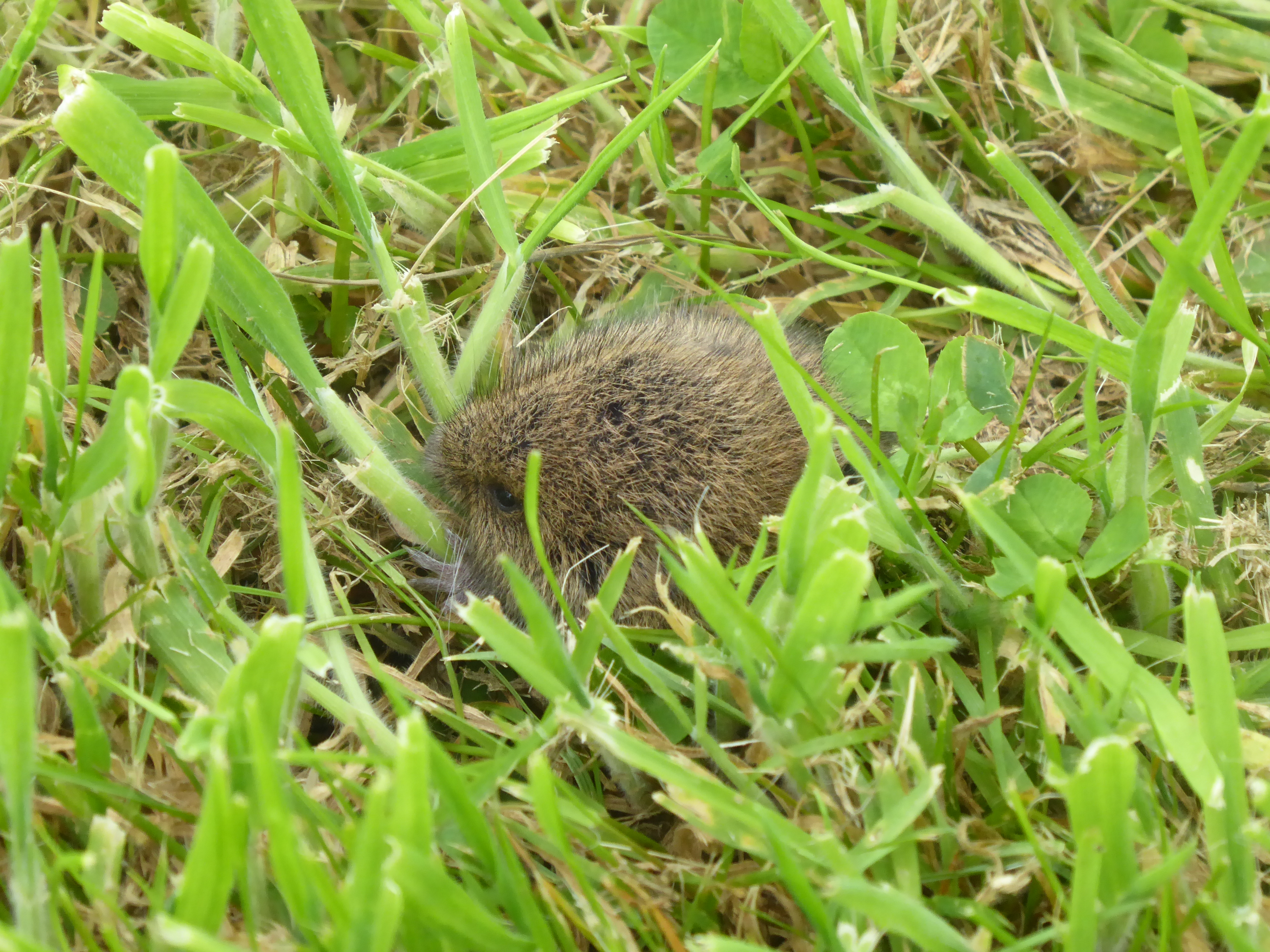Nothing new for my tally today, but the watermeadow is awash with baby frogs or toads. They are mostly scrambling through the grass, but some have tried to leap.
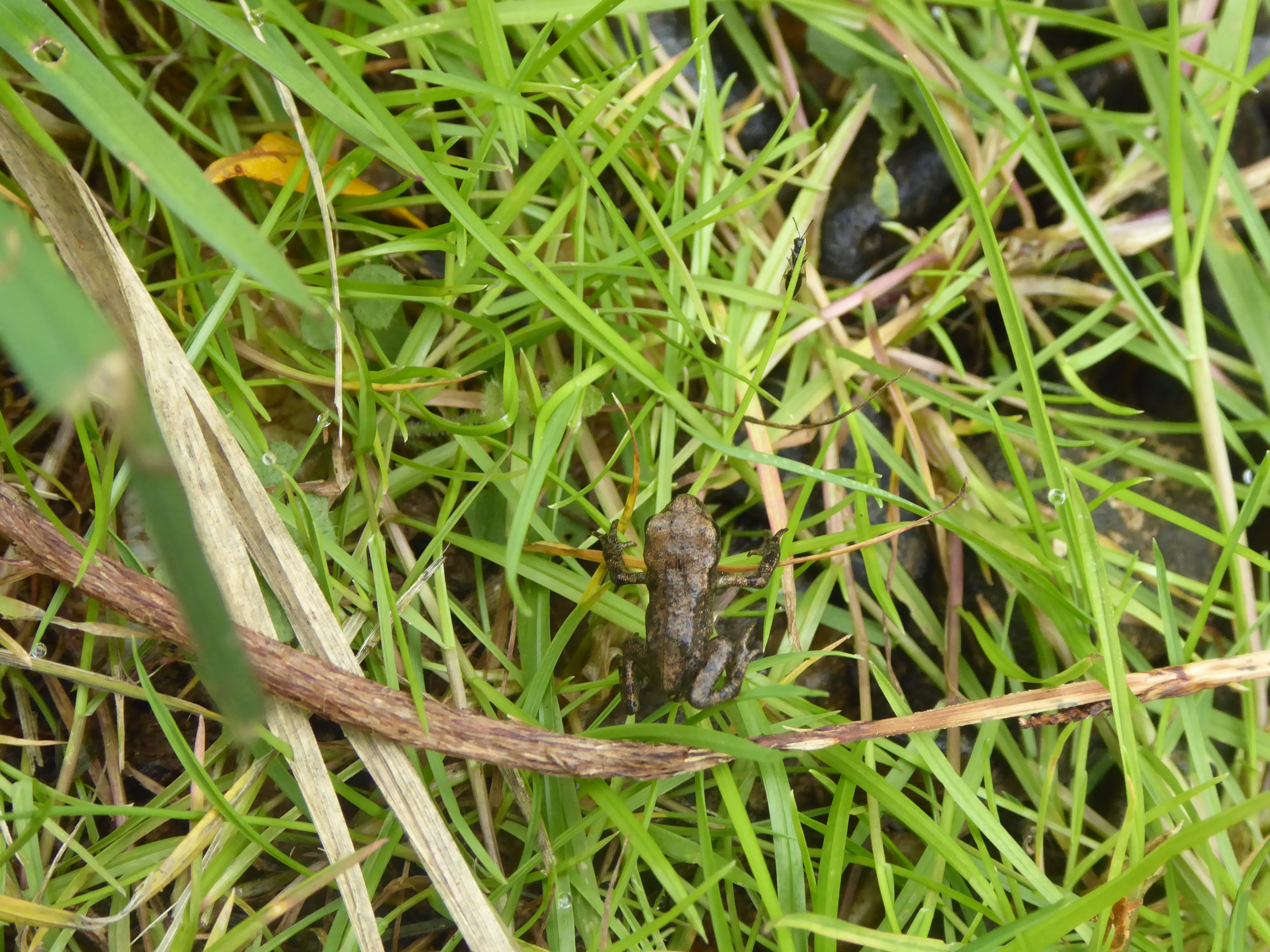
And we still have tadpoles…
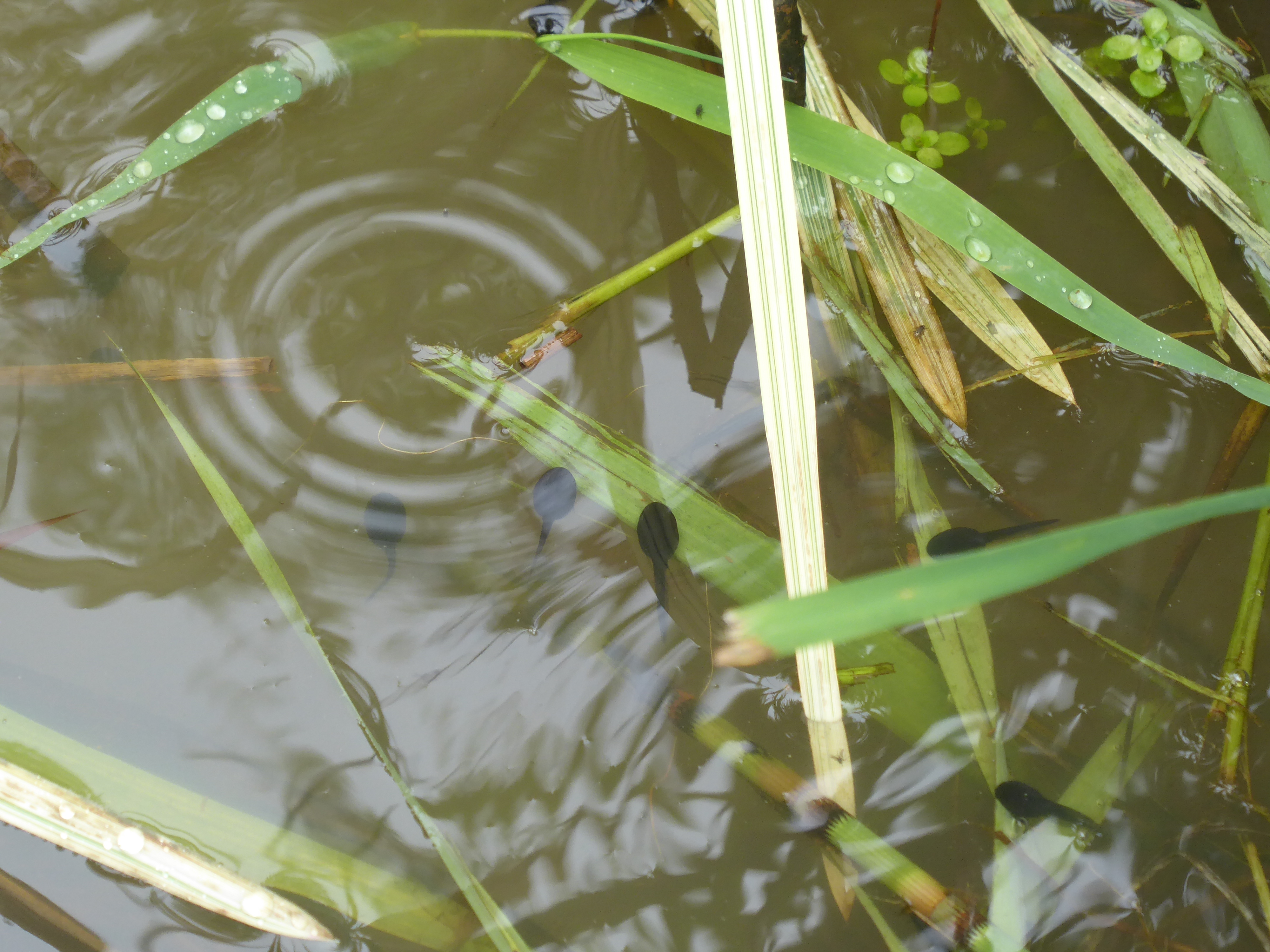
Discovering the flora and fauna in a small square of Portmellon Valley

Nothing new for my tally today, but the watermeadow is awash with baby frogs or toads. They are mostly scrambling through the grass, but some have tried to leap.

And we still have tadpoles…

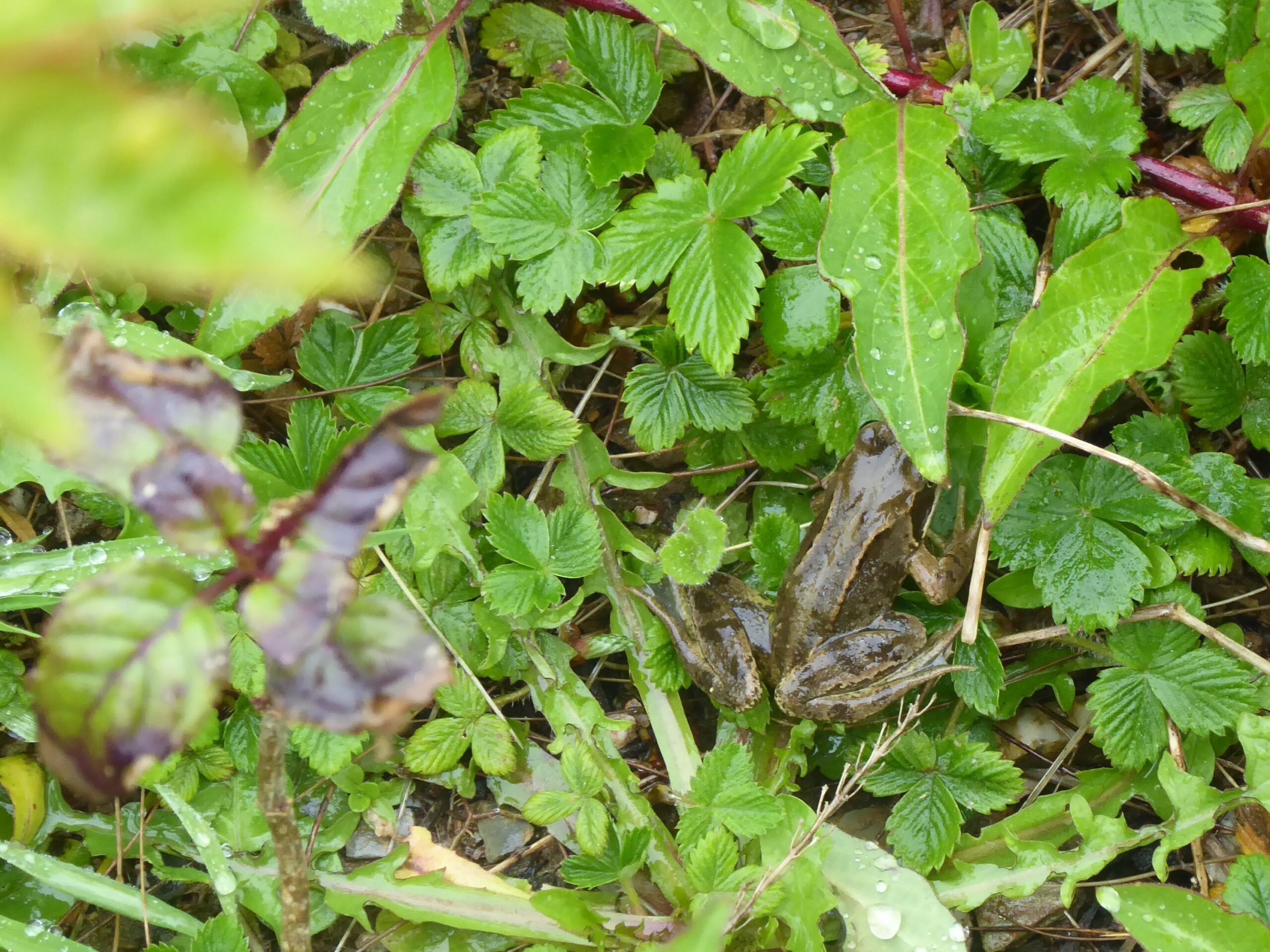
Finally, I have snapped a frog. I was planning on finding frogspawn as a compromise but haven’t been able to get to the pond yet. An actual frog is even better. This is a frog because its skin is slimy and smooth, rather than dry and warty. It has longer legs than a toad, webbed feet and hops rather than crawls. It is slimmer than a toad and has a more streamlined shape.
I’m still hoping to see frogspawn or tadpoles. Last summer we had many tiny froglets hopping around in the watermeadow.
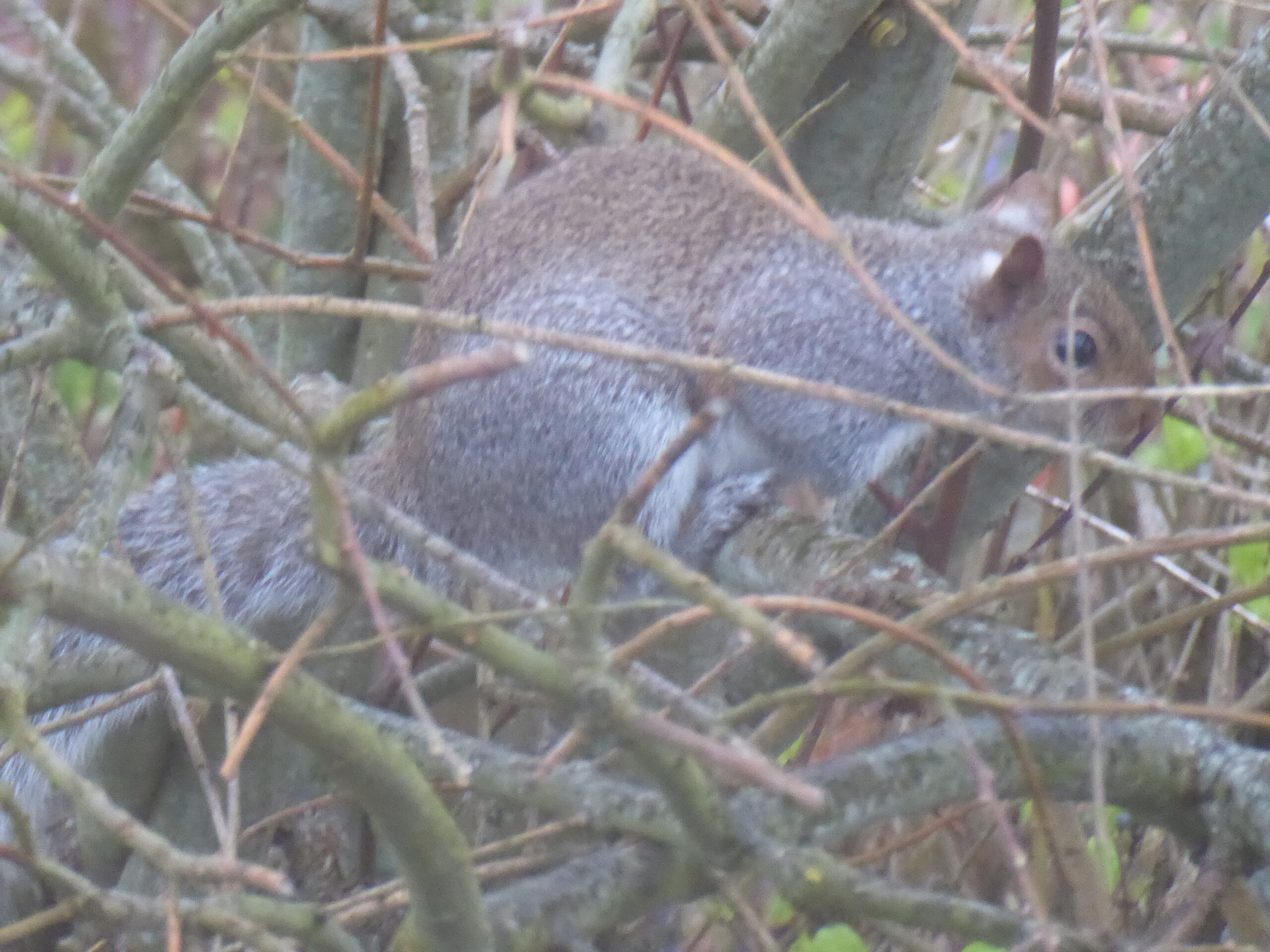
Well, you might think that it’s nothing special. But this is only the second time I have seen a grey squirrel visiting us in the 4¾ years we have lived here – and yes, he did scamper up the garden and make a beeline for the bird feeder!
Squirrels prefer open woodland with over 25% of mature trees – oak and hazel. Our land doesn’t meet those criteria, being too low in trees – and no oaks or hazels – which is why he isn’t a regular visitor.
Squirrels have a vast menu. As well as nuts, they eat buds, flowers, fruits, fungi, birds’ eggs and fledglings, scraps from the bird table, and insects. They are well-known for caching food in small holes to retrieve in times of scarcity.
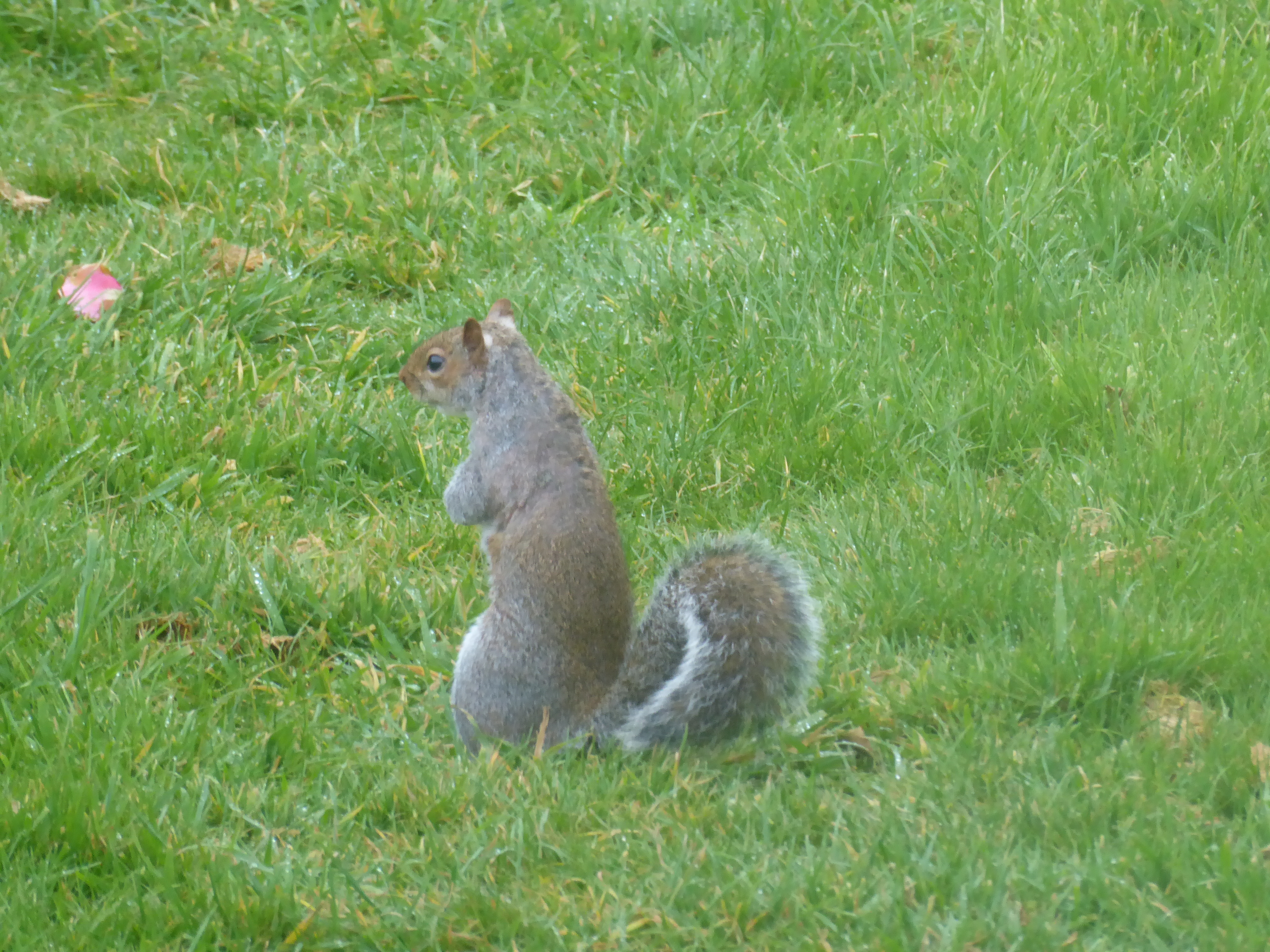

The watermeadow is flooded again at the moment, but the other day when I went down with my camera, I saw these tracks in Little Venice. I wondered what they were. They have four toes with claws. That rules out the badger, which has five toes. It rules out cats, which can retract their claws, so don’t have claw prints. Obviously not hooves, or the prints of small mammals. So it only leaves dog or fox prints. The difference between the two is that fox prints are smaller and slenderer than dog prints. The other difference is that the two central claw prints curve inwards for foxes and straight ahead for dogs.
This makes things quite exciting as if you look at the top left print you can see that the two central claws have a curve on them, and they are quite small for dogs. So, although I thought that dogs were more likely, as we have a few nearby, Mr C disagrees, on the grounds that dogs are unlikely to venture into our garden and we hear foxes regularly at night. We just haven’t seen one yet.
The jury is out.
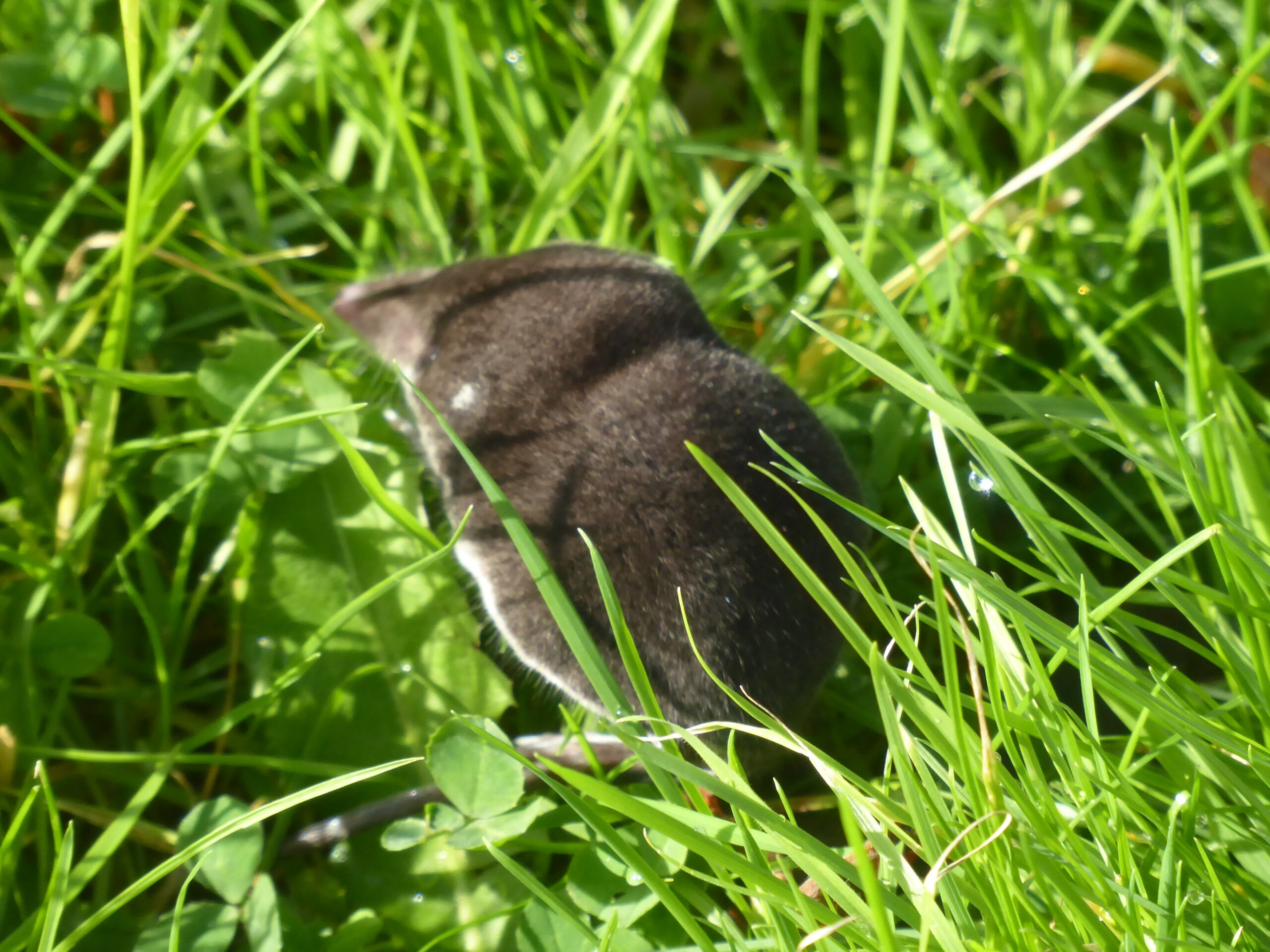
On Monday, something very exciting happened. Mr C. called me to the kitchen window as he had seen a kestrel landing on the lawn. Of course I was too late, and the kestrel had flown off, but Mr C. spotted what had caught the kestrel’s attention.
I hurried down to the lawn and this little creature was rooting around in the grass, as though it was looking for a hole to bolt down. It let me get up quite close and at one point it was scuffling around my feet. This was great for photos, but I got far more of its rear end than its face. It was so black and its fur so short and thick, that I was trying to see its front paws to make certain it wasn’t a mole. Also, I wanted to get a good look at its snout and tail, just to make sure.
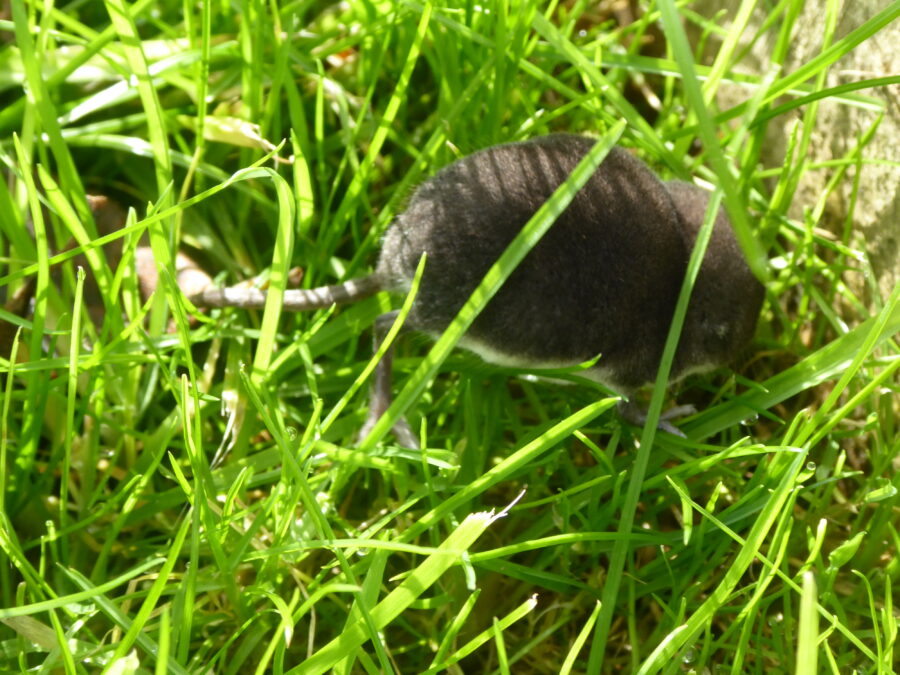
Obviously a shrew because of its distinctive long snout, at first I assumed it was a pygmy shrew as that’s the only kind I’ve seen in the garden. However, I did think it was a bit big for a pygmy shrew and the water shrew is the largest of British shrews. Then there was the colouring – you can see the clear demarcation of black top and white belly, plus white tufts by its ears. Plus, if you zoom into the picture below you can see white hairs on its otherwise smooth tail. All these attributes are indicative of a water shrew.
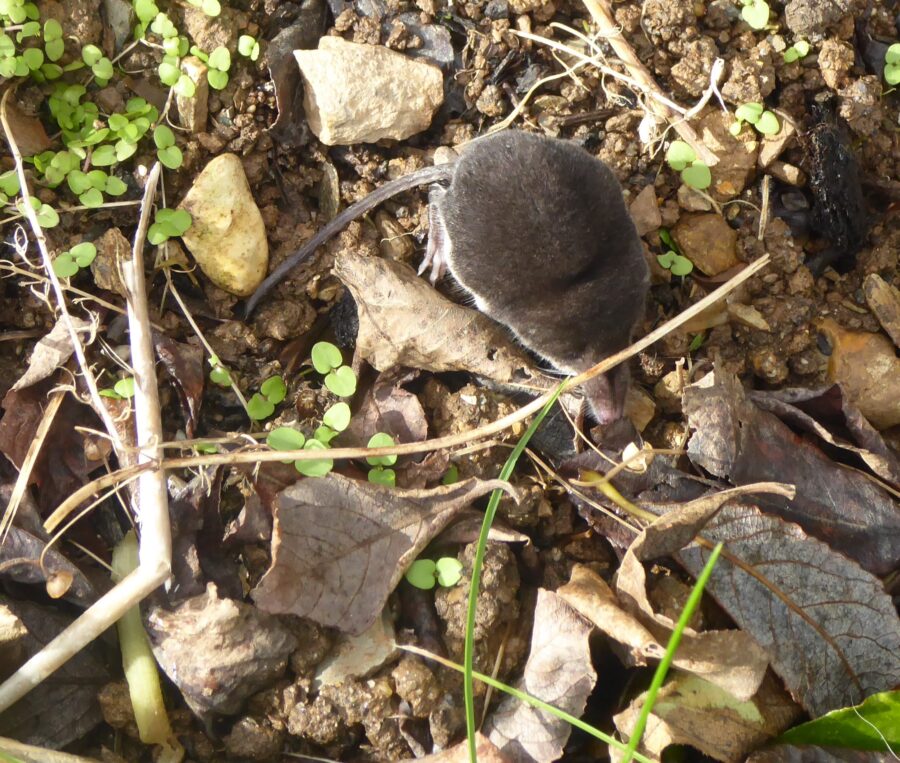
So, I’m going to count it, as clearly it has come up from the watermeadow, right?
But what was it doing in the garden? Water shrews typically rest in their burrows during the day and emerge at night to catch insects and other invertebrates, as well as aquatic species like shrimps, newts, frogs, and small fish, which they dive for. Being semi-aquatic, it prefers a waterside habitat, or damp woodlands and hedgerows.
But perhaps it has been flooded out of its burrow – you saw how wet the valley is – and is seeking shelter higher up. Or maybe the kestrel dropped it as it was flying over the garden and swooped down to pick it up, which would explain why it didn’t scurry away faster – maybe it was a bit dazed. As you will see from the third picture, it made its way off the lawn towards a ‘wildlife corridor’ at the back of our vegetable beds. From there it could have a clear run under cover all the way back down to the watermeadow. Fingers crossed that it made it to safety.
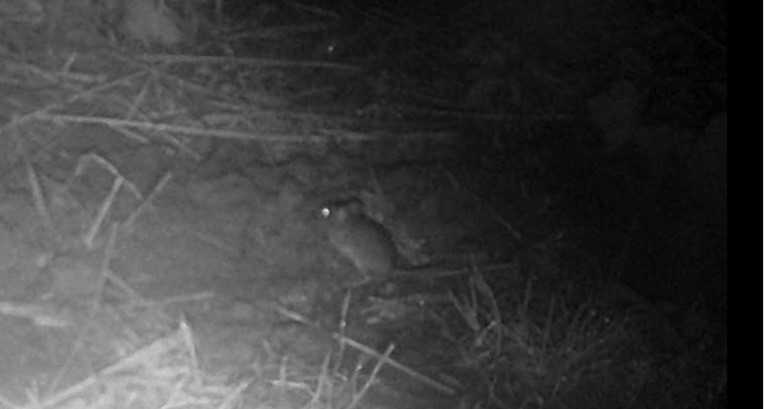
It’s difficult to get around the whole of the watermeadow at the moment as most of the paths are under water. We are expecting Storm Ciaran tonight and the stream has already breached its banks on both sides. The alder saplings on the far side are still above water, but the stream is only inches away from them. On the near side, the path in Alder Corner is above water, but the left-hand side of the watermeadow (Weasel Walk) and the middle is mostly under water, and the pond is overflowing. Even the paths that look dry are really soggy, so I am walking down the drainage gully, which Mr C has cleared back to its original shingle, because I really want to protect the turf paths.
So, preparing for the storm, I brought in the Trail Cam and found five video clips. Four were of mice and one was of something large, which brushed past the camera. I think it was the badger, but there wasn’t much to go on, just a furry edge moving past!
The pictures aren’t very good quality, but this one I thought I could identify as a Wood Mouse. The wood mouse is also known as the field mouse or long-tailed field mouse. Whereas the house mouse is grey all over, the Wood Mouse has sandy brown fur and a white to grey belly. Although the picture isn’t in colour, you can clearly see a lighter belly. Its tail is roughly the same length as its head and body, and what was a clincher for me was the back feet which are large, as they spring and leap around, which this one did. They are mainly nocturnal and live in rough grasslands and gardens as well as woodland. They live in underground burrows and at this time of year they are gathering and storing food. Their diet is varied: seeds, snails, insects, fruit, berries, nuts, and fungi.
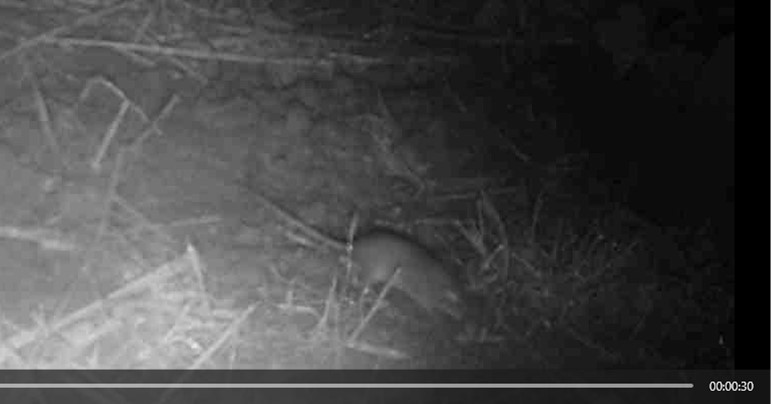
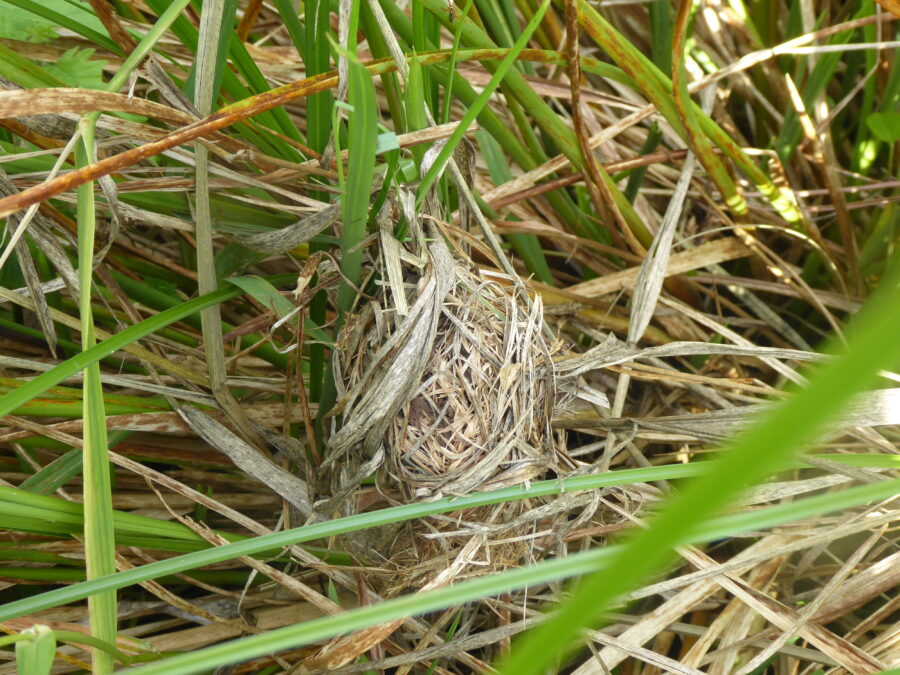
This means that we have also had Harvest Mice, as I found this nest in the summer, wrapped around a grass stalk. I wasn’t sure whether it was a mouse nest, but I’ve now got round to checking it out and found out that it is a mouse’s nest.
Harvest Mice have a blunt nose, and a shorter tail, almost as long as their body. They live in spherical woven nests sited off the ground in long grasses and they live in reed beds and long tussocky grassland as well as hedgerows and the edges of woodland. They eat seeds, fruit, and insects.

We were out tidying the garden after the storms and rain of last week. I was trimming the grass on the steps, which is a bit of a trip hazard. The steps lead down to the watermeadow and are on the left of the ramp, which has a bit of dry-stone wall to stop it collapsing. Suddenly, I noticed a tiny silvery snake on the dry-stone wall next to me. Except that it wasn’t a snake, it was a baby slow worm. I was over the moon! I saw an adult slow worm, patterned in a glossy brown tweed, writhing across the lawn a couple of months ago, but because it was the top garden, I didn’t count it even though we have seen slow worms on the ramp in the past.
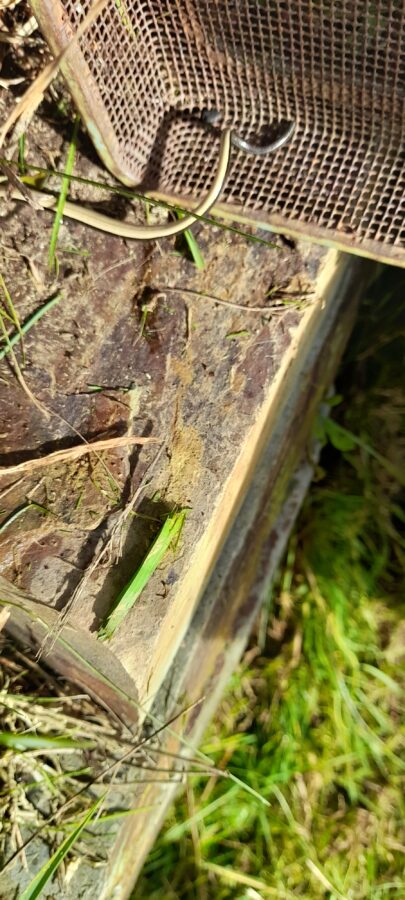
Also, this one was a baby, with striking two-tone colouring – silver upper and black lower – sleek as a bullet train. I called to Mr C, who came running down with a bird feeder tray, which we carefully put him in for a photoshoot – I was determined not to let the baby get away without a photo.
Slow worms, of course are neither slow nor worms. They are legless lizards, and like lizards can shed their tails if scared, so we had to be really gentle, as this one was so tiny I don’t think there’d be much left of him if he lost his tail.
The name ‘Slow Worm’ is thought to come from the Old English ‘slawyrm’ which means striking worm – wrong on both counts. They are also known as blind worms, also false, but like most other lizards, they are able to blink. Snakes can’t do this as they don’t have eyelids. This obviously led to a lot of confusion in olden times about what the slow worm actually was.
Here’s a picture of Little Venice this week, looking a bit damp. It will be a lot damper than this over the winter!
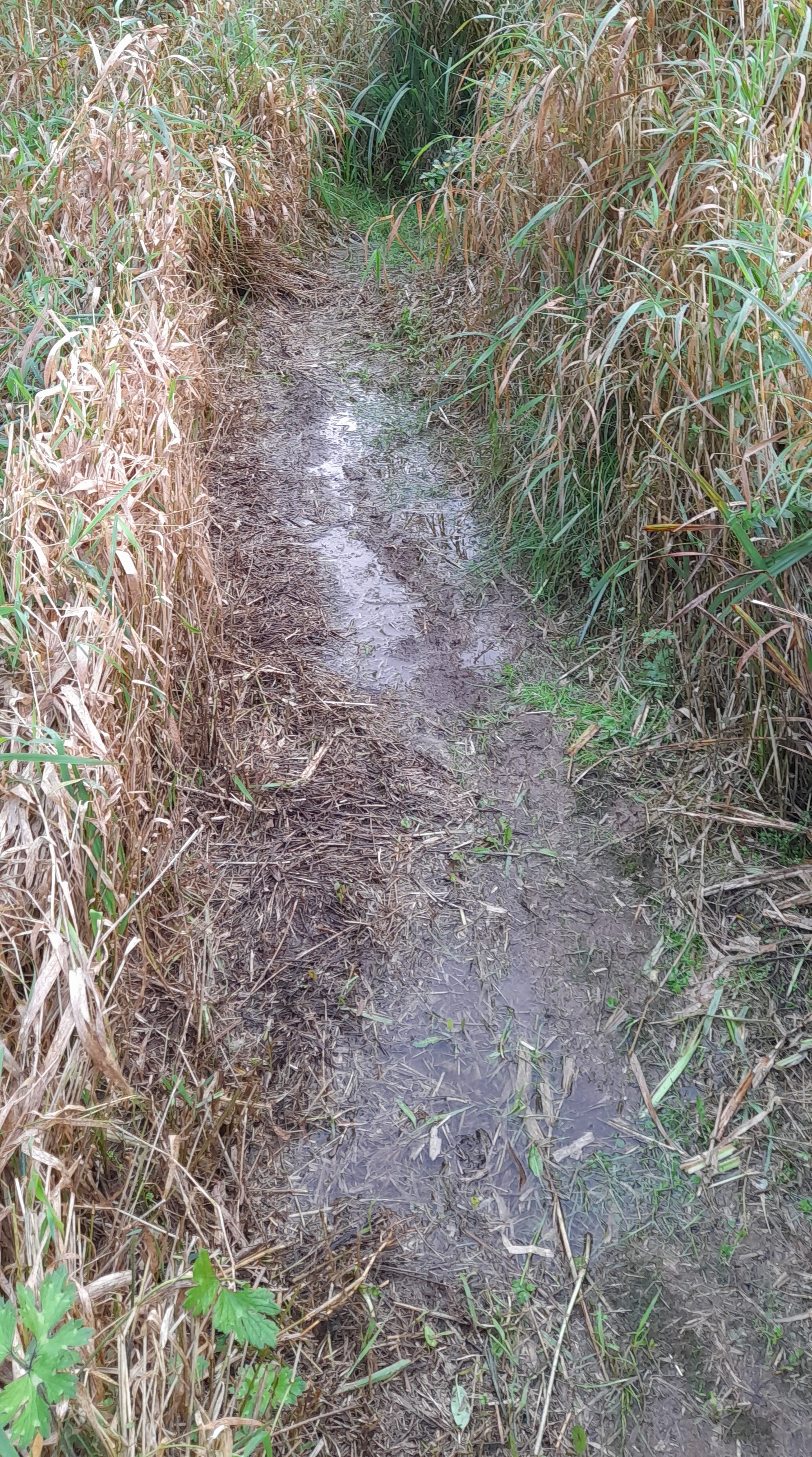
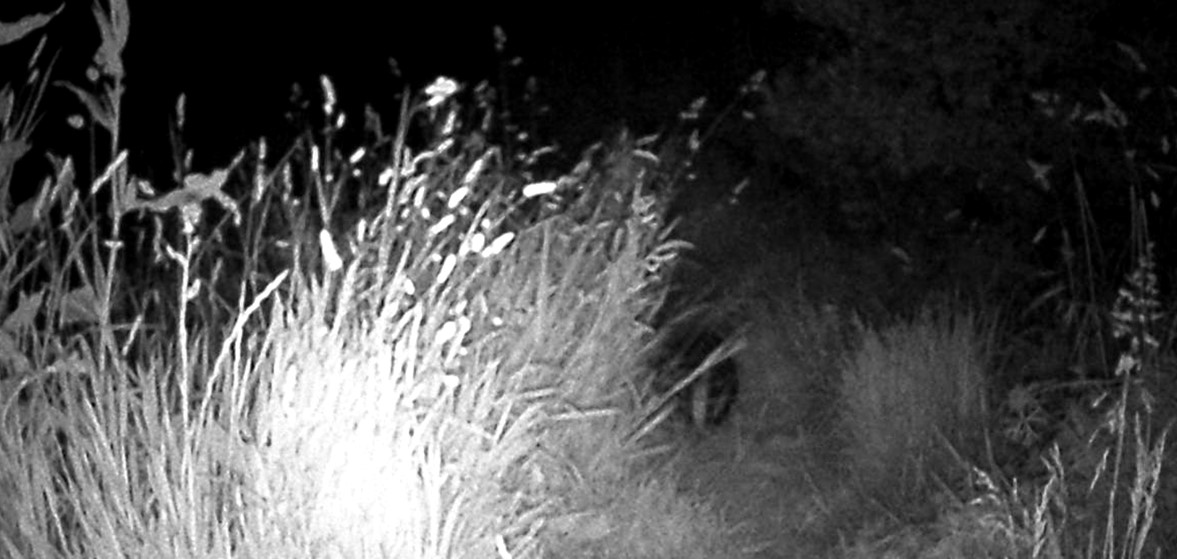
We’ve been struggling to find a good position for our trail cam where it doesn’t get knocked over and where it picks up wildlife, that isn’t just grass waving around. The top of our ramp has proved to be the best vantage point for the badger, and I was delighted that we managed to catch it (especially after I accidentally deleted some footage last year!) I was hoping to catch mice and voles, or the owl, but we need to keep experimenting with locations. I was pleased to learn that there is only one type of badger in the UK. I thought I’d better check, just to make sure. The animal we know as ‘the badger’ is correctly known as the European Badger (Meles meles, which is simply Latin for badger). There are other types of badger in the world – American, Asian, Honey, Chinese ferret-badger etc
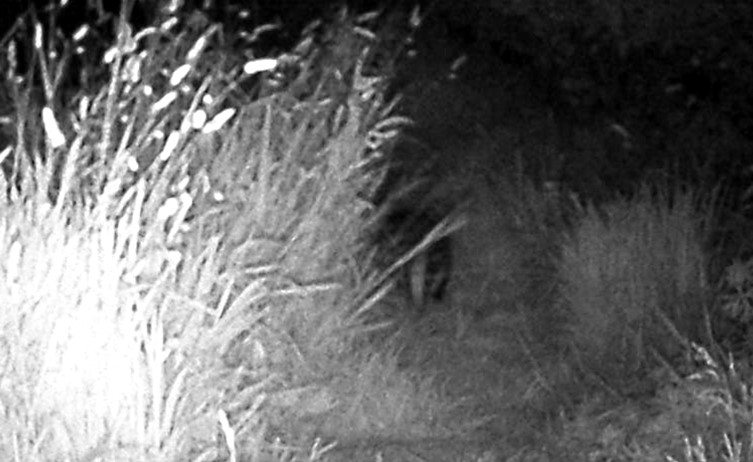
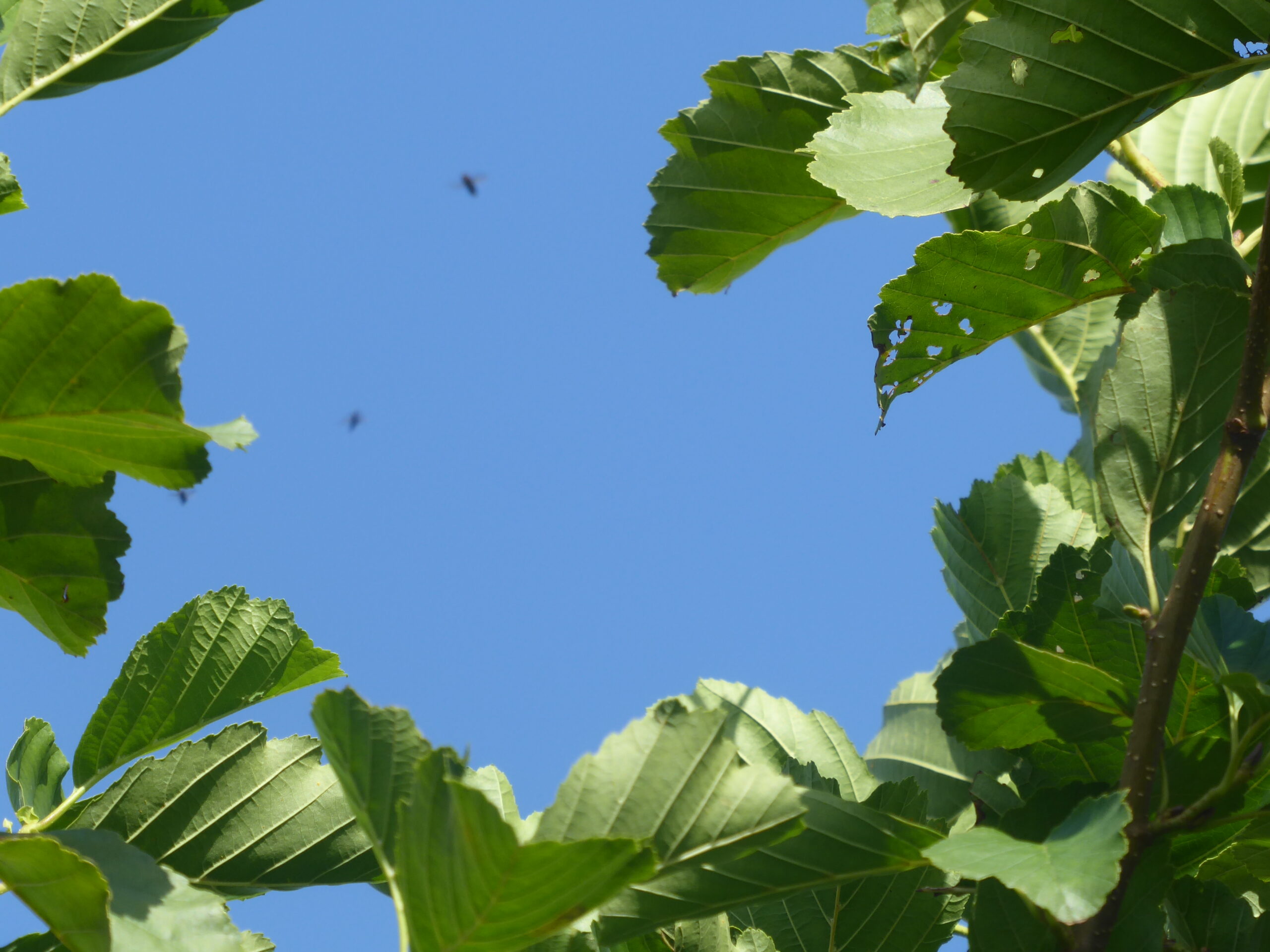
Looking up to the alder treetops, I could see a swirl of midges scribbling in the sky and I couldn’t resist a photo. This is how I am recording all the tiny gnats and midges that will never pose for photoshoots – as one generic entry – at least until I get a better idea or opportunity.
And I loved that bit of clear blue in between all the mizzle and showers we have had lately!
Meanwhile, down at my feet moles have been busy digging their way round the watermeadow. We are never going to see an actual mole, but here is the evidence. We often have ‘evidence’ in the upper garden, too, and although they can be destructive, it’s a delight to know that moles are still around. I remember the school playing field studded with mole hills when I was at primary school but have rarely seen them since.
We wonder where the moles go in the winter, as they don’t hibernate. Instead they dig deeper into the ground below the frost and carry on eating earthworms until the spring when they build bigger chambers underground and rear their young.
But how does that work in a wetland habitat? Moles can swim and are adapted to live in a low-oxygen environment. Whilst they are not aquatic mammals, they can cope with a flooded tunnel, but will move to higher and drier ground if the ground becomes submerged.

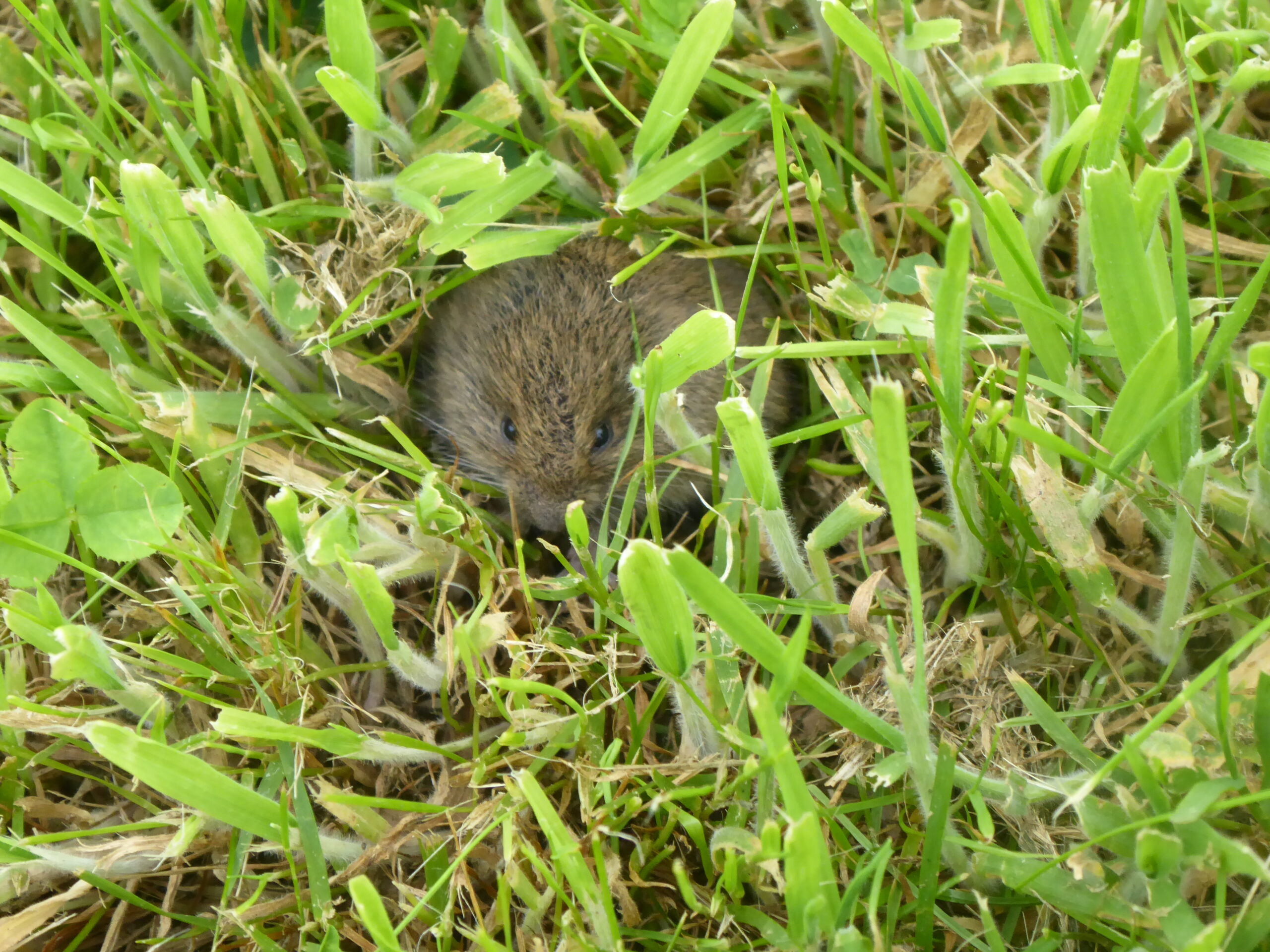
We’re not sure what this field vole was doing out in the open, but he seemed chirpy enough and scuttled away after his photoshoot.
But firstly, is it a vole or a mouse? Voles have much shorter tails than mice, smaller ears and rounder, blunter faces.
Secondly, what type of vole is it? There are three to choose from. The water vole is much larger, about the size of a rat, but with a shorter furry tail. It is also darker in colour. The bank vole is brown, rather than grey-brown, and smaller with a slightly longer tail.
So, this is a field vole, gray-brown, with a paler grey belly and noticeably shaggy fur. It lives in grassland, so probably has a hole in our bank, but voles prefer to make runs through the grass, rather than tunnels through the earth. They eat plant matter – seeds, roots, leaves – and can have up to six litters of up to seven babies a year. Unfortunately, that’s 42 snacks for a lot of animals and birds. Their average lifespan is only one year.
